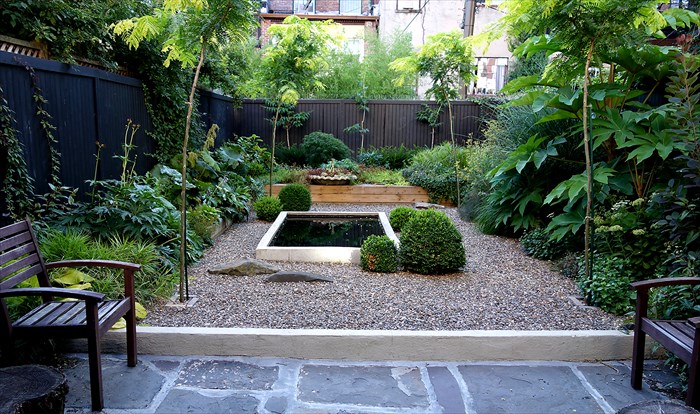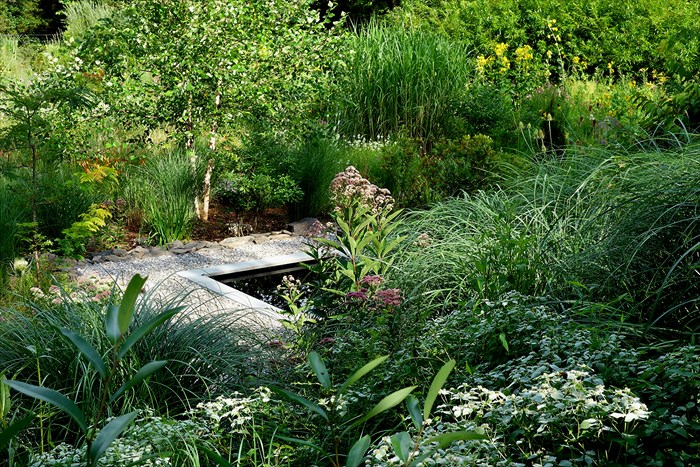Different gardens

Patterns of use, or nonuse, are beginning to clarify the nature of the Brooklyn garden. I was reminded of that yesterday when we made our first visit to the Barnes Foundation in Philadelphia, the new building on Benjamin Franklin Parkway where Albert Barnes' extraordinary art collection is now on display. In the lower lobby, and extending up through two levels to the roof opening, is a striking glass-enclosed garden planted with ferns and several tall Ginkgos and Sweet Gums rising through the building. Most definitely a garden to be looked at. There's no way to enter it. A second summer with the Brooklyn garden confirms what I've been thinking. It's a garden to be looked at through the wide glass wall of the living room. It's possible to go outside to see the garden more closely, to see the sky, to sit, but patterns of life (and perhaps having a large walking garden in the country) mean we appreciate it as an object of contemplation, isolated behind a wall of glass, just as some Japanese gardens are to be seen, not used.Practical considerations--the rising grade toward the back of the garden left by a giant Mulberry that fell--resulted in a design of low, but gently rising terraces necessary to give plantings sufficient depth of soil to grow in. So the garden in effect displays itself to the viewer inside the house, almost like a stage set. There's a theatricality about it. A chance circumstance entirely changed the nature of the garden. (I'd been planning a garden that would very much be a refuge, a place to sit outside.)The dark reflecting pool, really the heart of the Brooklyn garden, led me to make a similar pool in the country garden on Federal Twist Road. The very different landscape, patterns of use, and eventually close plantings that give a sense of security and protection will make this a place for sitting out, for feeling the breath of moving air, watching the changing light.
A second summer with the Brooklyn garden confirms what I've been thinking. It's a garden to be looked at through the wide glass wall of the living room. It's possible to go outside to see the garden more closely, to see the sky, to sit, but patterns of life (and perhaps having a large walking garden in the country) mean we appreciate it as an object of contemplation, isolated behind a wall of glass, just as some Japanese gardens are to be seen, not used.Practical considerations--the rising grade toward the back of the garden left by a giant Mulberry that fell--resulted in a design of low, but gently rising terraces necessary to give plantings sufficient depth of soil to grow in. So the garden in effect displays itself to the viewer inside the house, almost like a stage set. There's a theatricality about it. A chance circumstance entirely changed the nature of the garden. (I'd been planning a garden that would very much be a refuge, a place to sit outside.)The dark reflecting pool, really the heart of the Brooklyn garden, led me to make a similar pool in the country garden on Federal Twist Road. The very different landscape, patterns of use, and eventually close plantings that give a sense of security and protection will make this a place for sitting out, for feeling the breath of moving air, watching the changing light. I want to spend more time exploring the differences in these two gardens.
I want to spend more time exploring the differences in these two gardens.
